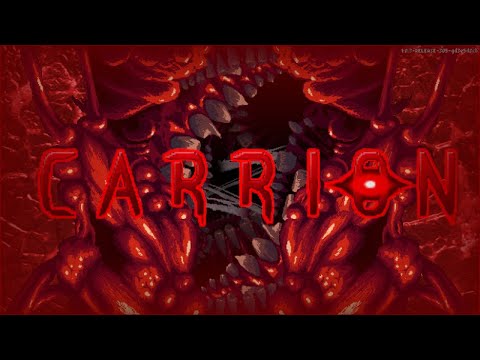the Monster

With no canon name, species or origin, the monster is as mysterious as it is dangerous. The only things that need to be known about it are the mutations and abilities that it uses to escape the scientific research site containing it and every living thing inside.
General Physiology
- Its central mass is a nondescript blob of flesh, able to conform to its surroundings and ignore blunt force damage to a degree (source)
- The monster can smash down metal doors even before mutating natural weapons, implying its mass alone can break the doors (source)
- Many tentacles are used for mobility, allowing the monster to move extremely quickly despite its large size (source)
- Resistant to radiation and electricity, the latter of which actually refills the creature’s special ability meter (source)
- The creature can effectively corrupt its surroundings with biomass by crawling into holes or hives (source)
- The creature can shed biomass and consume shed biomass in red pools of water (source)
- Along its body are several biting mouths, used to consume humans quickly, tearing them apart (source)
- Eating humans will increase the mass of the monster, regenerating health and increasing size (source)
- The creature cannot tear armored enemies apart (source)
- A prehensile tentacle is used to snatch humans or other things (source)
- Tentacle is delicate enough to pull levers (source)
- Tentacle is strong enough to tear doors down (source)
- Tentacle is strong enough to tear apart mech suits (source)
- Can be used to toss debris hard enough to bisect people (source)
- By evolving, the creature can produce up to three prehensile tentacles (source)
Abilities
- Arachnoptysis: The monster produces a cobweb from its body that can be used to trap humans or interact with levers and switches (Small Form) (source)
- Photokinesis: By bending light, the Monster can turn invisible, evading humans and security systems. This ability runs on a finite pool of energy (Small Form) (source)
- Xiphorrhea: The monster lunges forward with claws of bone, allowing it to tear through wooden architecture and human beings alike (Medium Form) (source)
- Acanthosis: The monster grows several long keratin spikes from its body, then fires them out when enemies get too close. This ability runs on a finite pool of energy (Medium Form) (source)
- Harpagorrhea: The monster fires several large harpoons of bone, puncturing and yanking enemies or obstacles with brutal strength (Large Form) (source)
- Keratosis: The monster grows a layer of thick keratin over its mass, protecting it from everything in the facility for a short time. It’s primarily used to protect against explosives. This ability runs on a finite pool of energy (Large Form) (source)
- Echolocation: A strange cry that lets the creature identify crevices, objectives and edible prey (General) (source)
- Hydrophilia: An ability that activates when the creature touches water. It transforms into a number of aquatic worms, allowing for better underwater mobility and maneuverability. The transformation into worms and back is nearly instantaneous (General) (source)
- Parasitism: The monster can produce a tendril to puncture a human host. If it does, the monster will control the human and kill them instantly when finished. The creature has enough control to make use of weapons and machinery and can even be used on corpses (General) (source)
- Advanced Parasitism: The creature can now transform and perfectly emulate human beings. Initially, man made sensors were able to identify the creature, leading to its incapacitation. However, after evolving enough, the creature could emulate a human so closely that it could fool a biometric scanner, allowing it to escape the containment facility and freely walk outside (General) (source)
Weaknesses
- Even at its largest sizes, things like bullets and especially fire can hurt the creature. If the creature is set aflame, it has a few seconds to reach a water source or it will burn away completely (source)